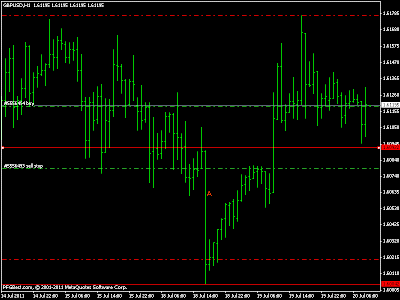Many of you, by now, should be having a trading plan or system. If you dont,then you must be pretty new to trading. So you better get a system for yourself as soon as you can. If you dont, the law of averages would soon catch up with you and you will soon start losing money. Your system or plan can be anything but the biggest thing here is sticking to your plan.
You have developed a great trading system which you find that works 70% of the time. It is on a 1H timeframe and you usually get signals every day. So now what happens? You get a signal. You either take it or leave it. Assuming that you take it, and you get a profit of say 50 pips and then you close out the trade. The pair continues to move in your direction and keeps going on for 2-3 days in the same way. You are out of the trade and slowly you get frustated. What do you do? You try to generate signals in your mind. You open your chart, have a long hard look at it and try to see things which actually do not exist.
Why do you do that? Cos you are out of the market and you want to get into the action. You see people and traders around you making money out of the move but you are left behind. So you want to do something to get back to it. The charts do not show signals for you to get into the action but somehow you want to do it. So you start seeing signals which do not exist. One of the biggest mistakes made by traders is to see things in charts which do not exist and try and take trades just cos you want to be in the thick of things. Signals in good trading systems should jump out of the charts and stare at you in the face. They should not be hiding inside the charts that you have to go in search of it. If they are like that, then either it is not a good system or it is not a good signal. So dont take those signals.
Wait for the signals to jump out from the charts. You need patience. Lots of it. That is the key. Dont try to generate signals and dont try to look hard to see things which are not there. Sit back, enjoy your trading. Enjoy the times that you are out of the market and wait for the right signal. Signals, if they arise, would be good and bright enough for you to see even when you are half asleep. You need not put your reading glasses on to see where the signals are. They will come to you eventually. It might take hours or even days but they will come. Make sure you take them when they come and only when they come.
So getting a good trading system is only part of the job. The biggest and most important thing is sticking to your trading system at all times and all costs.
You have developed a great trading system which you find that works 70% of the time. It is on a 1H timeframe and you usually get signals every day. So now what happens? You get a signal. You either take it or leave it. Assuming that you take it, and you get a profit of say 50 pips and then you close out the trade. The pair continues to move in your direction and keeps going on for 2-3 days in the same way. You are out of the trade and slowly you get frustated. What do you do? You try to generate signals in your mind. You open your chart, have a long hard look at it and try to see things which actually do not exist.
Why do you do that? Cos you are out of the market and you want to get into the action. You see people and traders around you making money out of the move but you are left behind. So you want to do something to get back to it. The charts do not show signals for you to get into the action but somehow you want to do it. So you start seeing signals which do not exist. One of the biggest mistakes made by traders is to see things in charts which do not exist and try and take trades just cos you want to be in the thick of things. Signals in good trading systems should jump out of the charts and stare at you in the face. They should not be hiding inside the charts that you have to go in search of it. If they are like that, then either it is not a good system or it is not a good signal. So dont take those signals.
Wait for the signals to jump out from the charts. You need patience. Lots of it. That is the key. Dont try to generate signals and dont try to look hard to see things which are not there. Sit back, enjoy your trading. Enjoy the times that you are out of the market and wait for the right signal. Signals, if they arise, would be good and bright enough for you to see even when you are half asleep. You need not put your reading glasses on to see where the signals are. They will come to you eventually. It might take hours or even days but they will come. Make sure you take them when they come and only when they come.
So getting a good trading system is only part of the job. The biggest and most important thing is sticking to your trading system at all times and all costs.











